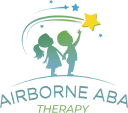Key Points:
- Behavior modification vs Applied Behavior Analysis differs in scope and application; behavior modification focuses on altering specific behaviors, while ABA focuses on improving overall life skills and behavior.
- ABA is backed by extensive research and is commonly used for individuals with autism, while behavior modification can be applied more generally.
- The methods used in behavior modification vs Applied Behavior Analysis vary, with ABA incorporating systematic and data-driven interventions, whereas behavior modification may not always involve such structured approaches.
In the world of behavior therapy, two terms often come up: behavior modification vs Applied Behavior Analysis (ABA). While they share similarities, understanding their key differences is essential for determining which approach works best for an individual’s needs.
Behavior modification focuses on changing specific behaviors, whereas Applied Behavior Analysis takes a broader approach, improving a person’s overall behavioral functioning. This article delves into the distinctions between the two and offers insight into how they apply in real-world situations.

What is Behavior Modification?
Behavior modification refers to a broad set of techniques used to change specific behaviors by reinforcing desired actions and discouraging unwanted ones. This approach is often used in both clinical settings and everyday life to address problematic behaviors like tantrums, aggression, or defiance.
Behavior modification is typically based on principles of operant conditioning, where behaviors are shaped through rewards (positive reinforcement) or the removal of rewards (negative reinforcement or punishment). It can be used to address specific, short-term goals, such as teaching a child to raise their hand in class or stop engaging in undesirable behaviors like hitting.
What is Applied Behavior Analysis (ABA)?
Applied Behavior Analysis (ABA) is a more structured and comprehensive approach that applies the principles of behavior modification within a broader context. ABA is scientifically proven and has been extensively researched, especially for its use in helping individuals with autism spectrum disorder (ASD).
ABA therapists not only aim to modify specific behaviors but also work on building life skills such as communication, social interaction, and independence.The goal of ABA is to improve overall quality of life by encouraging positive behaviors while reducing harmful ones.
Through detailed assessments, data collection, and analysis, ABA therapy ensures that interventions are effective and tailored to each individual’s needs.
Behavior Modification vs Applied Behavior Analysis: What are the Key Differences?
While both behavior modification vs Applied Behavior Analysis utilize principles of reinforcement and punishment, the key differences lie in their approaches and goals.
| Aspect | Behavior Modification | Applied Behavior Analysis (ABA) |
|---|---|---|
| Scope and Application | Focuses on addressing specific behaviors in various contexts like education, therapy, or parenting. | Takes a holistic approach to improve overall development, including communication and social skills. |
| Techniques and Methods | Utilizes direct reinforcement strategies to encourage desired behaviors and reduce unwanted ones. | Employs a variety of strategies, such as DTT, NET, and functional behavior assessments, making it adaptable. |
| Research and Data | May not involve structured, data-driven analysis; suitable for short-term challenges. | Rooted in scientific research with ongoing data collection to ensure the effectiveness of interventions. |
| Focus on Long-Term Development | Targets immediate behavior changes without emphasizing long-term skill development. | Aims to teach lasting skills that generalize across various settings, like communication and problem-solving. |

When to Choose Behavior Modification
Behavior modification can be highly effective for specific behavior issues that need to be addressed in the short term. For example, if a child is engaging in frequent temper tantrums, behavior modification can be used to teach them more appropriate ways of expressing frustration. It is also useful for addressing behaviors that don’t require a comprehensive skill-building program.
In these cases, behavior modification offers a quick and focused solution. By using rewards and consequences, specific behaviors can be reinforced or discouraged based on the child’s immediate needs.
When to Choose Applied Behavior Analysis (ABA)
If you’re looking for a more comprehensive approach to behavior change, particularly when dealing with individuals with autism or developmental disabilities, ABA is often the better choice. ABA is not limited to addressing behavior but focuses on teaching a variety of skills that improve overall functioning.
For example, ABA therapy is often used to help children with autism learn how to communicate effectively, interact with peers, and become more independent. ABA can be used in a variety of settings, from schools to home environments, making it a flexible and effective approach for long-term development.
Benefits of Behavior Modification and ABA Therapy
Here are some of the benefits of behavior modification vs Applied Behavior Analysis:
Behavior Modification:
- Fast and targeted behavior change.
- Simple to implement in everyday settings.
- Effective for addressing specific behavior issues (e.g., bed-wetting, swearing).
- Requires less training and can be used by parents, teachers, or caregivers.
Applied Behavior Analysis:
- Scientifically backed and researched.
- Focuses on long-term skill development, not just behavior change.
- Individualized treatment plans based on thorough assessments.
- Supports social, communication, and life skills development.
- Can address a wide range of behaviors across various settings.
Making the Right Choice for Your Child
Understanding the differences between Behavior modification vs Applied Behavior Analysis is crucial when choosing the right approach for addressing behavioral and developmental needs. Both methods offer valuable techniques, but the choice largely depends on whether you need a short-term behavior solution or a long-term developmental plan.
If you’re looking for specialized ABA therapy, Airborne ABA is here to help. Our team of certified ABA therapists in Colorado uses evidence-based techniques, including behavior modification and ABA, to help your child develop lasting skills for independence and success.
Contact us today to learn more about how we can support your child’s growth!

